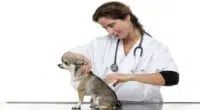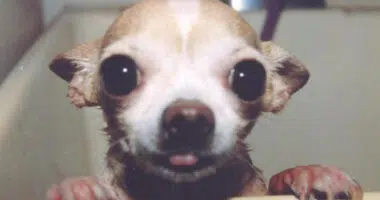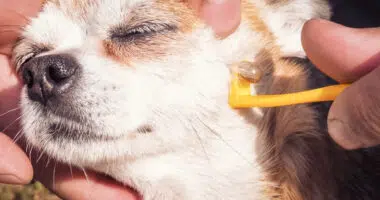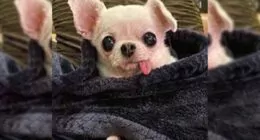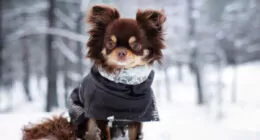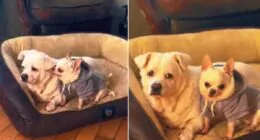Alopecia is defined as areas of abnormal hair loss on a dog, but these bald spots are typically signs of a bigger health issue. However, there are many causes of alopecia in Chihuahuas. Some are easily fixed while others are caused by more chronic issues.
By understanding the different reasons why a dog may develop alopecia, a dog owner will be better prepared to help treat the hair loss in a timely manner.
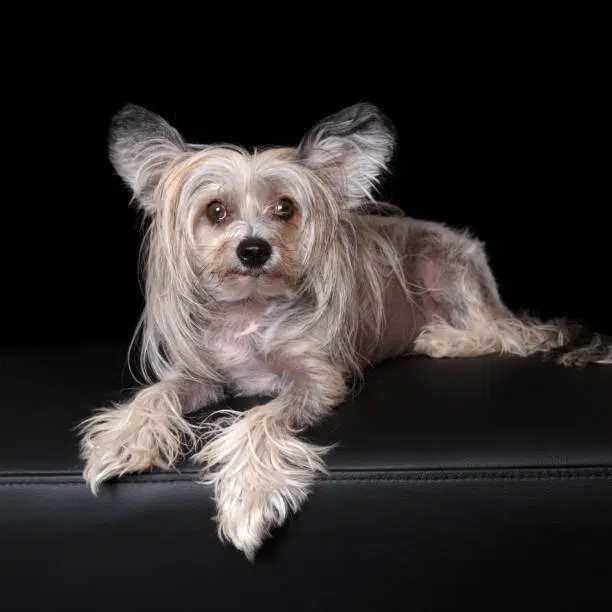
What is Alopecia?
Alopecia is another word for hair loss and there are many different types of alopecia that can affect dogs. These types are classified by the location or cause of the hair loss.
Itching and inflammation of the skin may also accompany alopecia. Also, depending on the cause of the alopecia, there may be round, focal areas of hair loss, a moth-eaten appearance to the fur, or even symmetrical hair loss on either side of the body.

Causes of Alopecia
Alopecia can occur due to a number of reasons, but causes are typically lumped into two categories: congenital or acquired. Some causes of alopecia have specific names while others are simply considered hair loss due to an underlying reason. Some specific types of alopecia include:
- Alopecia Areata: Focal areas of hair loss are classic with this type of alopecia. This is a rare auto-immune disease that typically doesn’t have any inflammation. It is usually seen on the head and neck.
- Follicular Dysplasia: This type of alopecia affects specific breeds and causes a poor hair coat that is often described as being moth-eaten in appearance. Color dilution alopecia and follicular lipidosis are specific forms of follicular dysplasia and are due to a genetic cause.
- Post-Injection Alopecia: After specific types of injections, some dogs develop alopecia at the injection site. Post-injection alopecia has been reported to occur after rabies vaccination or steroid injection and is due to the inflammation these injections can cause in the skin.
Other Causes
- Post-Clipping Alopecia: Sometimes when a dog’s fur is shaved the fur does not grow back in the clipped area. The cause of this type of alopecia is unknown.
- Pattern Baldness: This hair loss has an unknown cause but is seen in some breeds of dogs, like Dachshunds. It also often causes hyperpigmentation in the underlying areas of skin.
- Traction Alopecia: Sometimes dog owners use barrettes or hair ties to style their dog’s hair. If these hair stylings pull too hard on the hair follicles it can cause alopecia.
- Pinnal Alopecia: Isolated to the ear flaps, pinnal alopecia causes hair loss on the ears due to the hair getting smaller and smaller in this area.
Alopecia can also occur due to parasites such as mites or fleas, environmental or food allergies, bacterial or fungal infections, hormonal issues such as low thyroid hormone (hypothyroidism), or high cortisol (Cushing’s disease), some tumors, topical medications, and even seasonal fluctuations.
Get the latest Chihuahua Buzz
How to Diagnose Alopecia in Chihuahuas
If hair loss is noted in a dog, your veterinarian will try to determine the cause of it. Moreover, skin scrapings for parasites, physical examination, blood tests, and skin cultures or biopsies may be recommended to discover the reason for the alopecia. Some forms of alopecia do not have specific tests but they are usually diagnosed after other reasons are ruled out.
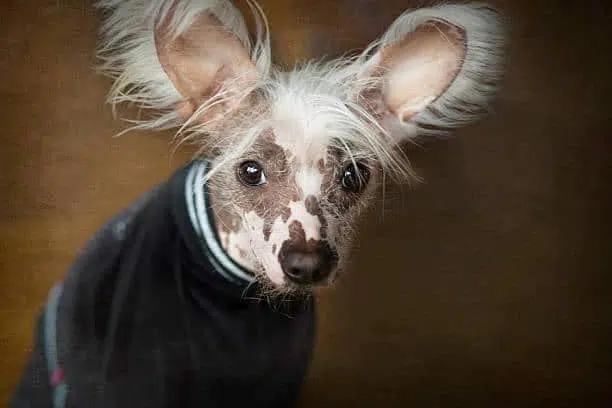
Treatment of Alopecia
The treatment for alopecia in dogs will vary based on the underlying reason for the hair loss. But, in some cases, anti-parasitics, antibiotics, antifungals, or other medications may be needed to cure the hair loss by fixing the underlying cause. Other times there is no cure for alopecia due to auto-immune or genetic causes.
How to Prevent Alopecia in Chihuahuas
Some types of alopecia are preventable while others are out of a dog owner’s control. Moreover, using parasite control and making sure any hair accessories are not applied too tightly are the best ways to prevent these avoidable types of alopecia.
Other types of alopecia that are due to a genetic or auto-immune cause are not preventable but may be lessened for future generations with selective breeding.
Is Alopecia Contagious?
Hair loss itself is not contagious but some causes of alopecia may be. If parasites, bacterial, or fungal infections are the reasons for alopecia, these may be transmissible to other pets as well as people.
Risk Factors for Alopecia in Chihuahuas
Most importantly, certain breeds of dogs are predisposed to developing alopecia. That is along with dogs that are not on parasite control medications. Also, breeds that are commonly affected by different types of alopecia include:
- Alaskan Malamutes (post-clipping alopecia)
- American Water Spaniels (pattern baldness)
- Bichon Frises (post-injection alopecia)
- Boston Terriers (pinnal alopecia and pattern baldness)
- Boxers (pattern baldness)
- Chesapeake Bay Retrievers (follicular dysplasia)
- Chihuahuas (pinnal alopecia, follicular dysplasia, and pattern baldness)
- Chow Chows (post-clipping alopecia and follicular dysplasia)
- Curly-Coated Retrievers (follicular dysplasia)
- Dachshunds (pinnal alopecia, follicular dysplasia, and pattern baldness)
- Doberman Pinschers (follicular dysplasia)
- German Shepherds (post-clipping alopecia)
- German Shorthaired Pointers (follicular dysplasia)
- German Wirehaired Pointers (follicular dysplasia)
- Great Danes (follicular dysplasia)
- Greyhounds (pattern baldness)
- Irish Setters (follicular dysplasia)
- Irish Water Spaniels (follicular dysplasia)
- Italian Greyhounds (pinnal alopecia, follicular dysplasia, and pattern baldness)
- Keeshonds (post-clipping alopecia)
- Labrador Retrievers (post-clipping alopecia)
- Manchester Terriers (pattern baldness)
- Miniature Pinschers (follicular dysplasia)
- Newfoundlands (follicular dysplasia)
- Poodles (follicular dysplasia)
- Portuguese Water Dogs (pattern baldness and follicular dysplasia)
- Rottweilers (follicular dysplasia)
- Salukis (follicular dysplasia)
- Samoyeds (post-clipping alopecia)
- Schipperkes (follicular dysplasia)
- Shetland Sheepdogs (follicular dysplasia)
- Shih-Tzus (post-injection alopecia)
- Siberian Huskies (post-clipping alopecia and follicular dysplasia)
- Silky Terriers (post-injection alopecia)
- Whippets (pinnal alopecia, follicular dysplasia, and pattern baldness)
- Yorkshire Terriers (post-injection alopecia and follicular dysplasia)
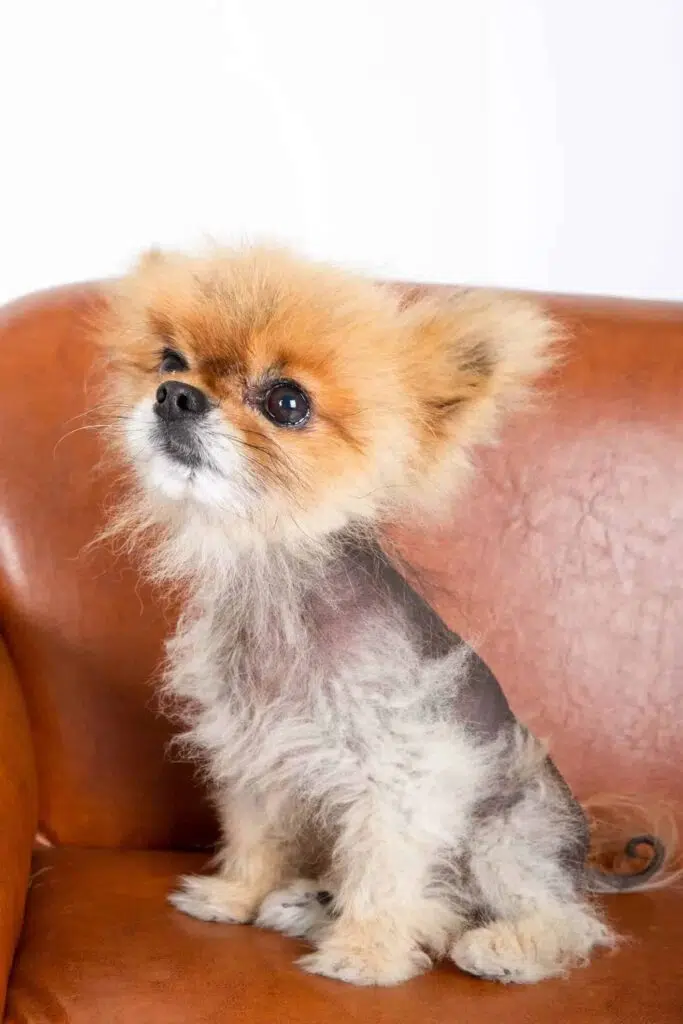
Source: thesprucepets


